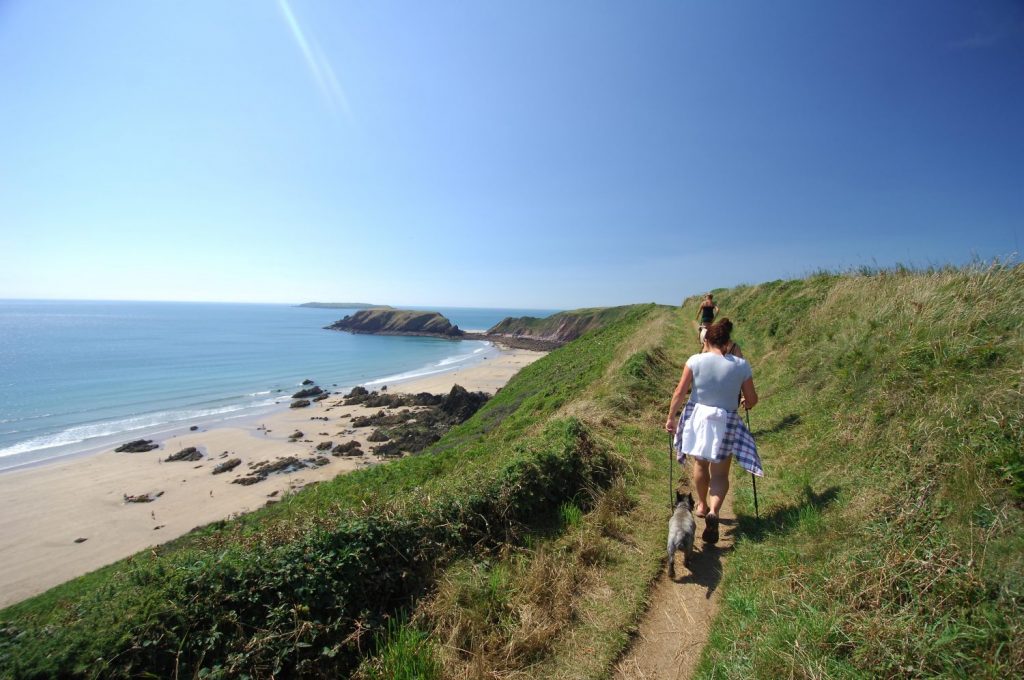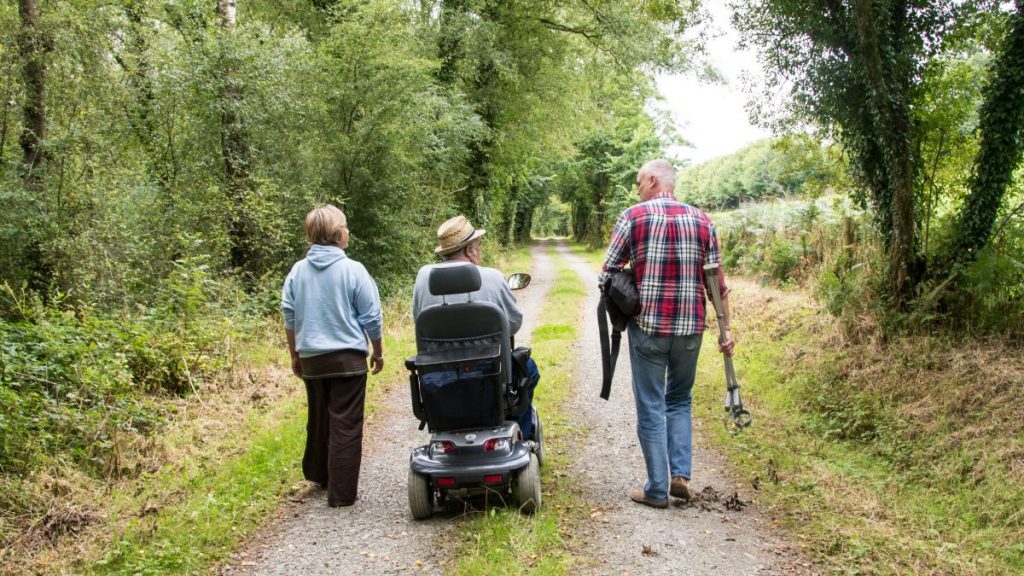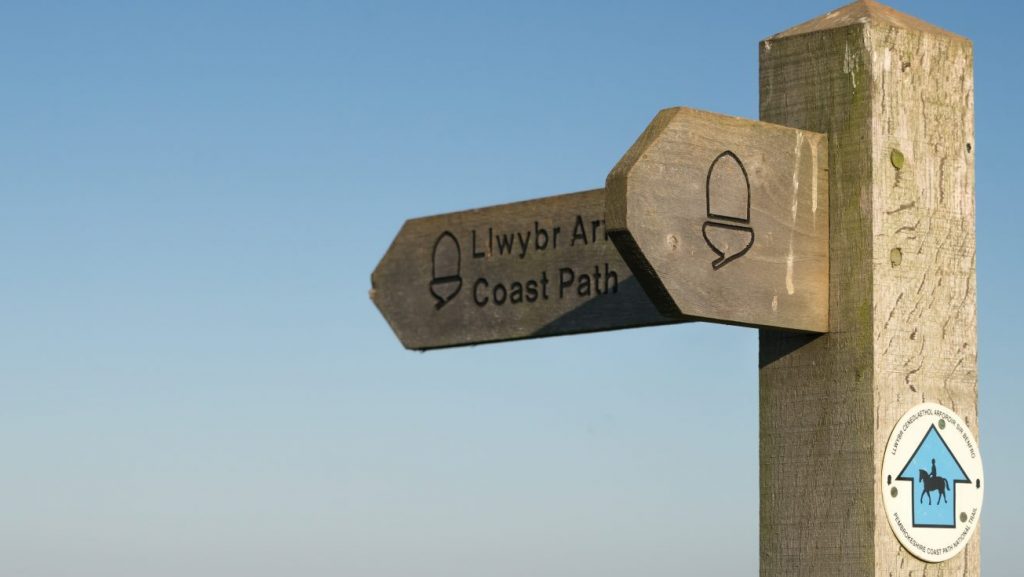DISTANCE/DURATION: 2.3 miles (3.7 km) 1 hour.
PUBLIC TRANSPORT: Service bus Tenby 349/359/350/351/352/353/360/361/ 381/333/390, Railway station.
CHARACTER: Easy to moderate but steep in some places, bridleways, cycle routes, fields and livestock, quiet lanes, can be wet and muddy in places.
CAUTION 0.2 mile (0.3 km) main road, 0.1 mile (0.15 km) minor road, some urban walking.
LOOK OUT FOR: Views of Carmarthen Bay, North Beach and attractive townhouses and Waterwynch Bay.
A walk with an excellent starting point, Tenby’s North Beach. Before setting off take in the sweep of golden sand and rocks, the most significant of them the slumbering giant that is Goskar Rock.
It does not take long to leave Tenby’s suburbs and be out into open countryside, climbing steadily up to the high ground of Cornish Down.
For a breather, stop to look back at Tenby and the broad expanse of Carmarthen Bay. There was a settlement here with its own castle long before the arrival of the Normans.
The town’s name in Welsh, Dinbych-y-Pysgod, means “the little fort of the fishes” and is first mentioned in a poem of the 9th century.
The ruined stronghold on Castle Hill, above North Beach, dates from the 12th century while the town’s walls were built a century later.
By the 16th century Tenby was a major port but the Civil War and a plague in the 1650s began a long period of decline. That only ended when the port was re-born as a holiday town.
The route explores rolling countryside reaching as far as where the railway line runs through the wooded valley of Knightson Brook.
The South Wales Railway arrived in Pembrokeshire in the 1850s. A branch to Pembroke Dock was opened in 1866, giving holidaymakers the chance to travel to Tenby by train.
The arrival of the railway was a boost to the town’s holiday resort ambitions. That process was begun in 1810 by Sir William Paxton, whose building programme set out to turn Tenby into a fashionable resort.
Just off the route, Waterwynch Beach is a tiny sand and pebble cove that is hemmed in by low cliffs. The coast between Waterwynch and Tenby is a nesting area for seabirds, including fulmars.
Find this walk
Grid ref: SN132012
SAFETY FIRST!
- Take great care when on the Coast Path
- Stay on the path and away from cliff edges
- Wear boots and warm, waterproof clothing
- Take extra care in windy and/or wet conditions
- Always supervise children and dogs
- Leave gates and property as you find them



